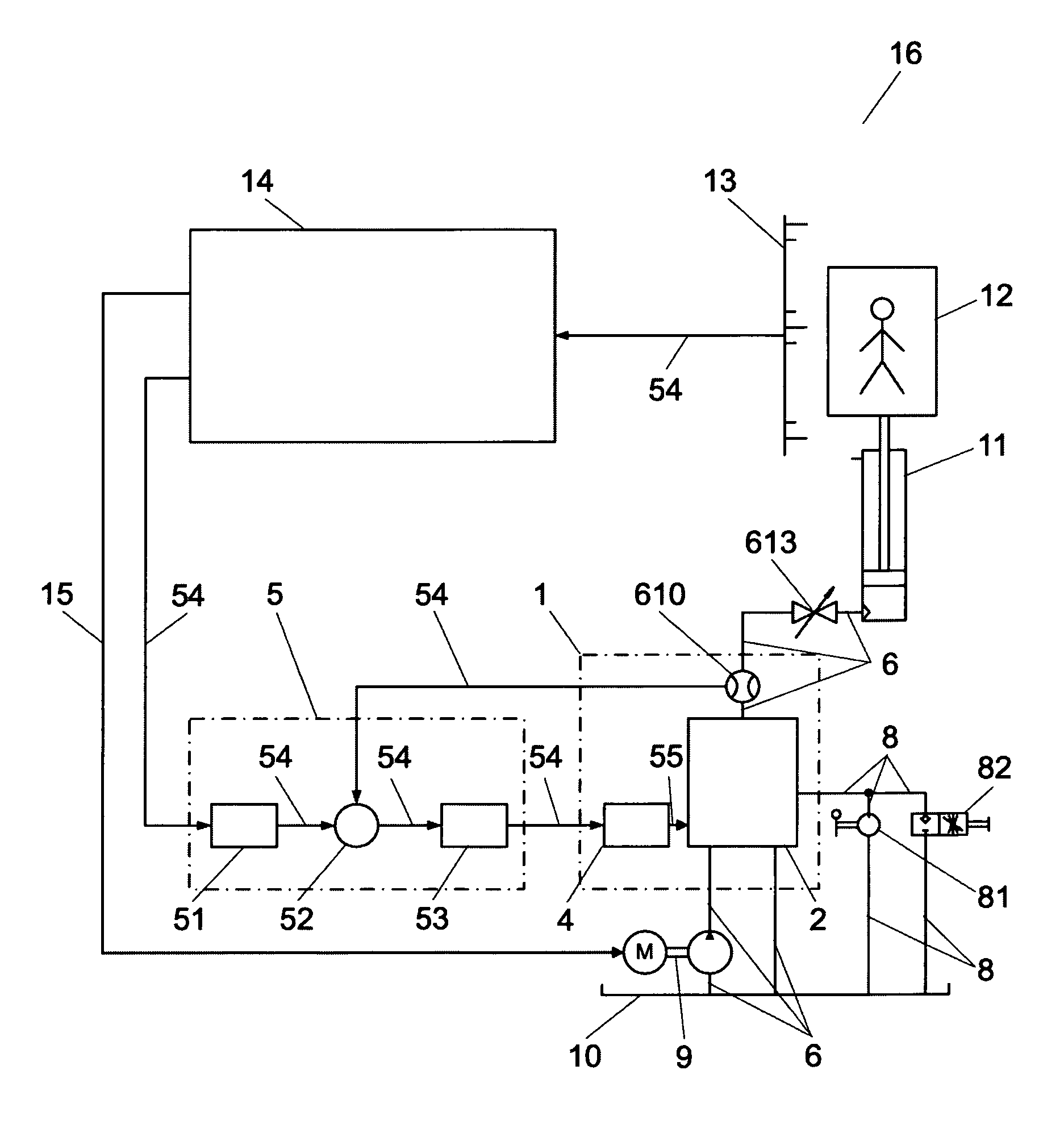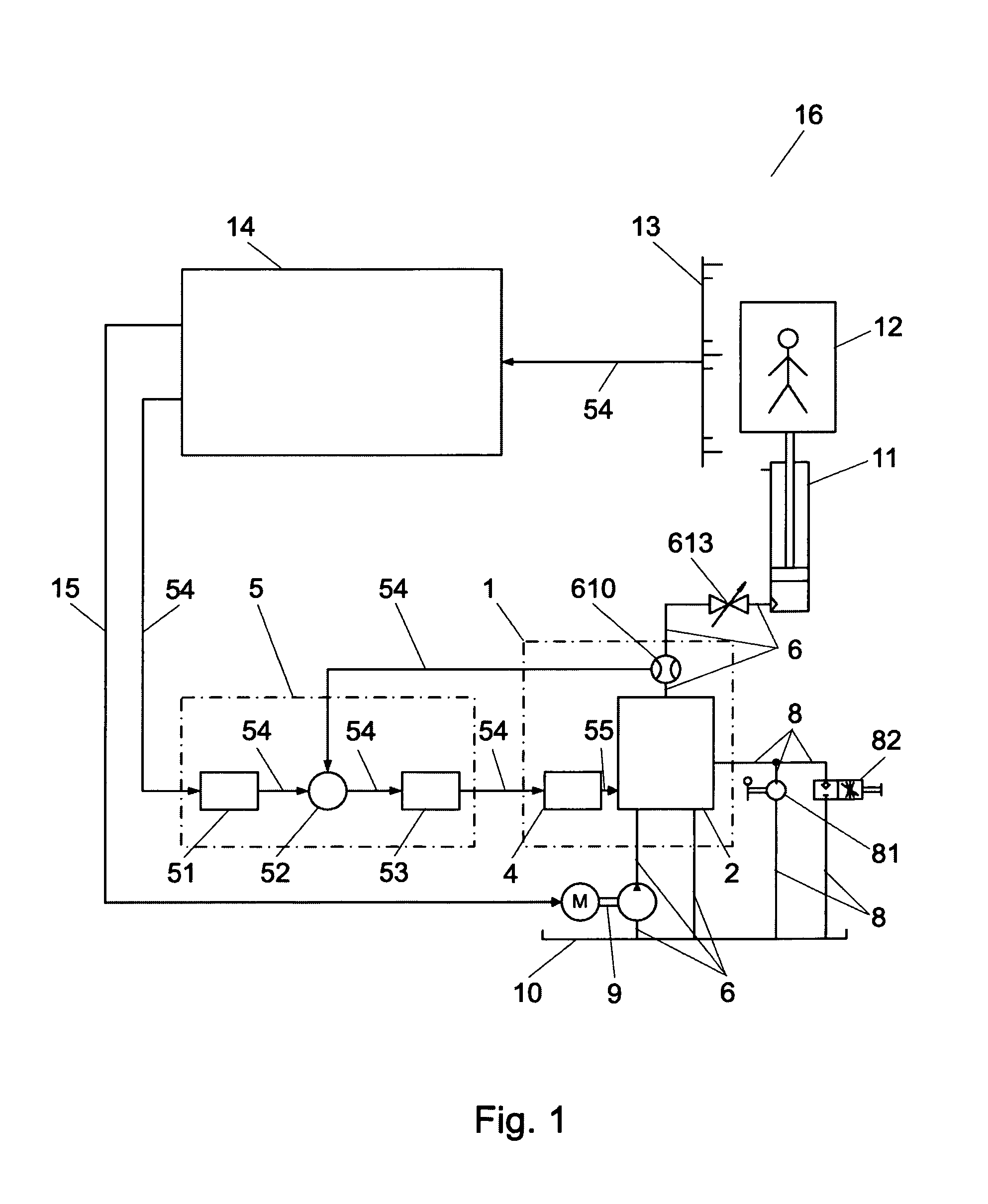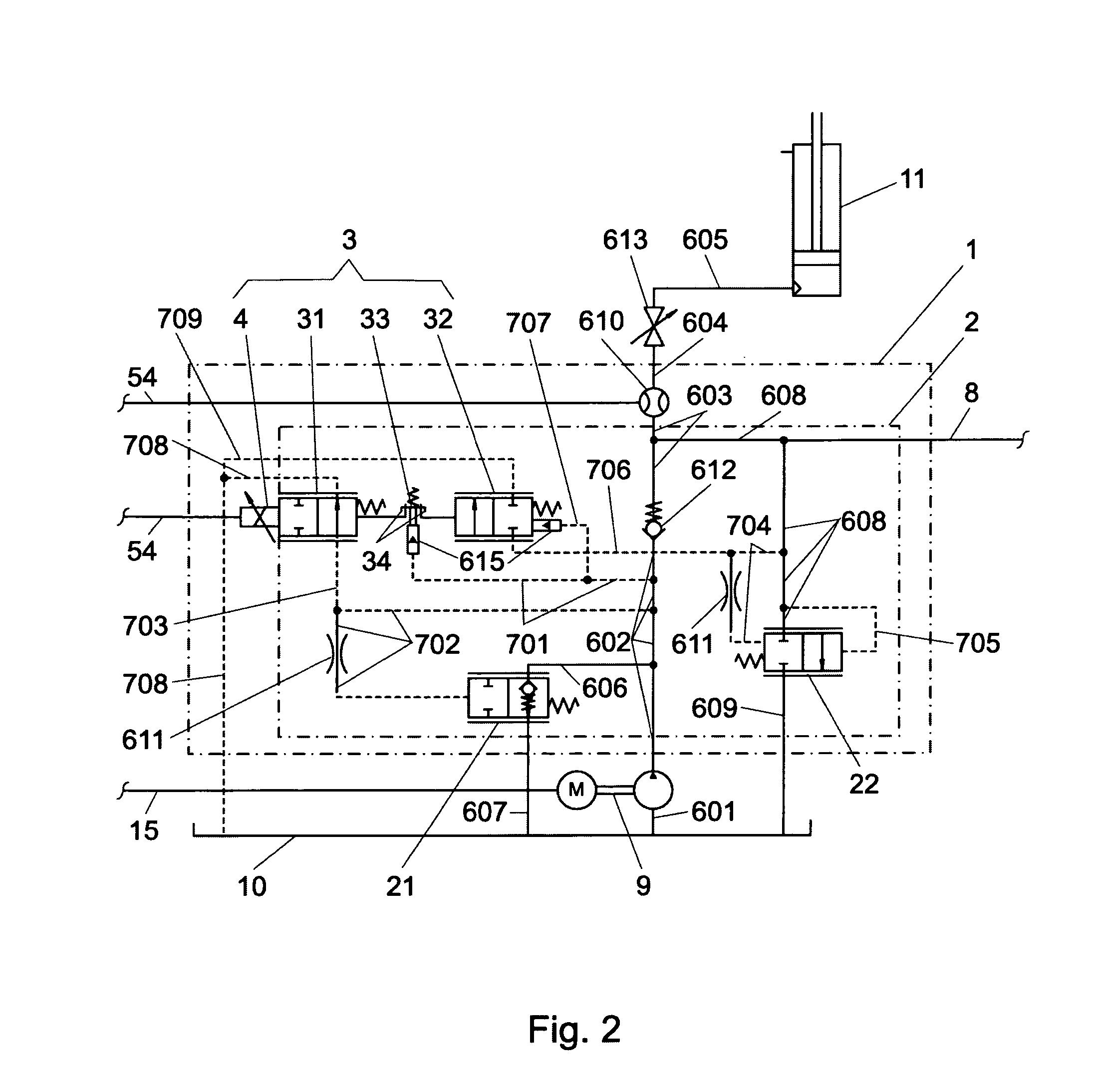Control device for a hydraulic drive
a control device and hydraulic drive technology, applied in the direction of servomotors, elevators, fluid-pressure actuators, etc., can solve the problems of affecting the operation of the hydraulic drive, the output speed and force is no longer reliable, and the viscosity of the working fluid changes, so as to reduce the control cost and ensure the effect of stability over the expected useful li
- Summary
- Abstract
- Description
- Claims
- Application Information
AI Technical Summary
Benefits of technology
Problems solved by technology
Method used
Image
Examples
Embodiment Construction
[0055]The preferred embodiment of the invention illustrated in the drawings sets forth the best mode for carrying out the invention. This best mode embodiment of the present invention will be described in detail below. In FIG. 1 the electro-hydraulic circuit diagram of a hydraulic drive system 16 for an elevator is shown in which the inventive control device 1 carries out controlling and timing of the lifting and lowering motion. Hydraulic elevator systems of this kind are used in buildings with several floors, especially in buildings with up to six floors, and have a movable elevator car 12 suitable for transportation of passengers and / or goods. As further components the hydraulic drive system 16 comprises a control device 1 with a valve block 2 which is connected via a flow path 6 in the form of a hydraulic power conduit usually provided as a pipe joint with a hydraulic cylinder 11 as a hydraulic drive. The hydraulic cylinder 11 is configured as a single-stage drive cylinder and c...
PUM
 Login to View More
Login to View More Abstract
Description
Claims
Application Information
 Login to View More
Login to View More - R&D
- Intellectual Property
- Life Sciences
- Materials
- Tech Scout
- Unparalleled Data Quality
- Higher Quality Content
- 60% Fewer Hallucinations
Browse by: Latest US Patents, China's latest patents, Technical Efficacy Thesaurus, Application Domain, Technology Topic, Popular Technical Reports.
© 2025 PatSnap. All rights reserved.Legal|Privacy policy|Modern Slavery Act Transparency Statement|Sitemap|About US| Contact US: help@patsnap.com



